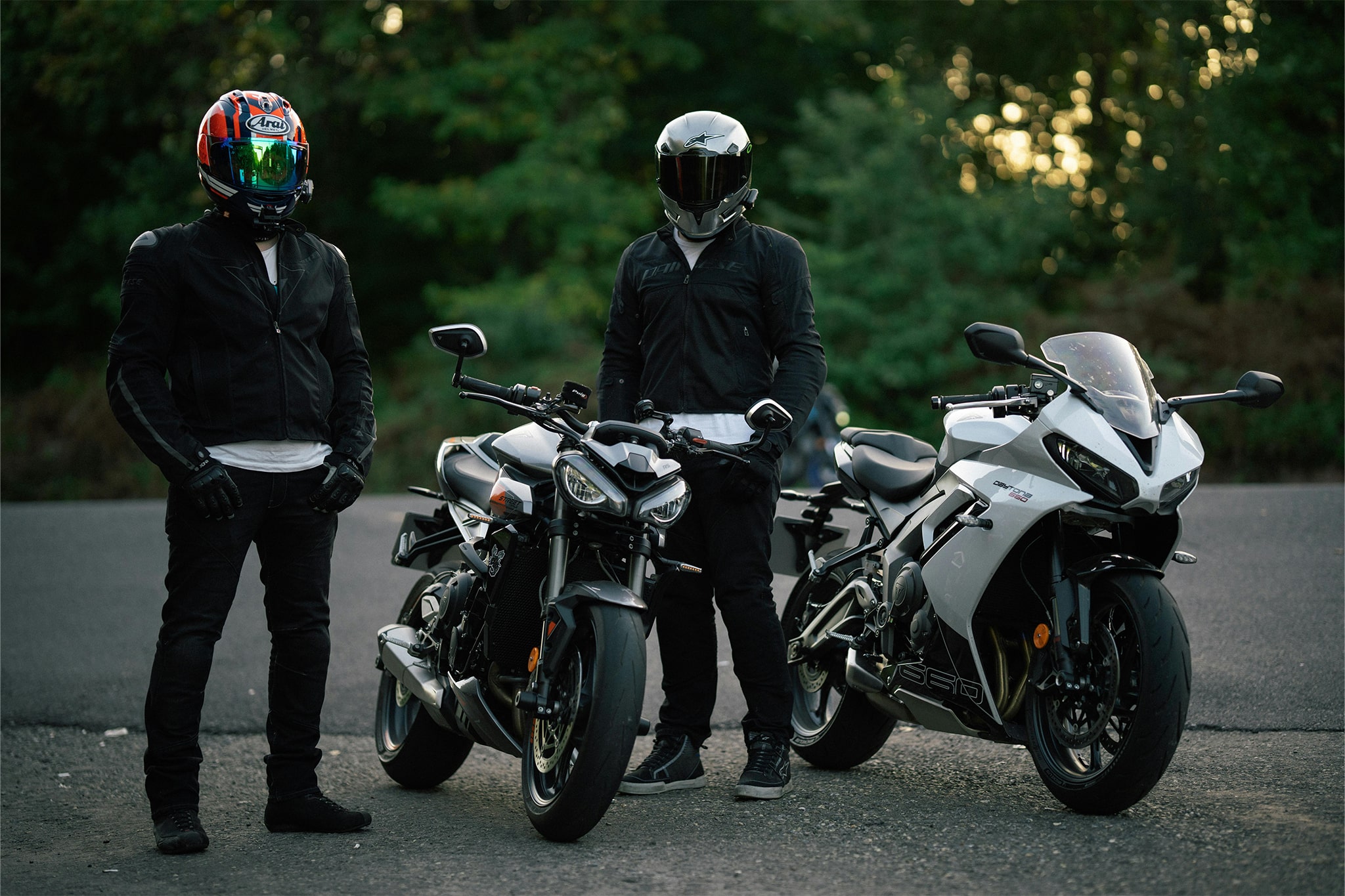Every community has its own lingo and slang terms, and riding is no different. This glossary helps you speak the language, understand your bike, and feel right at home.
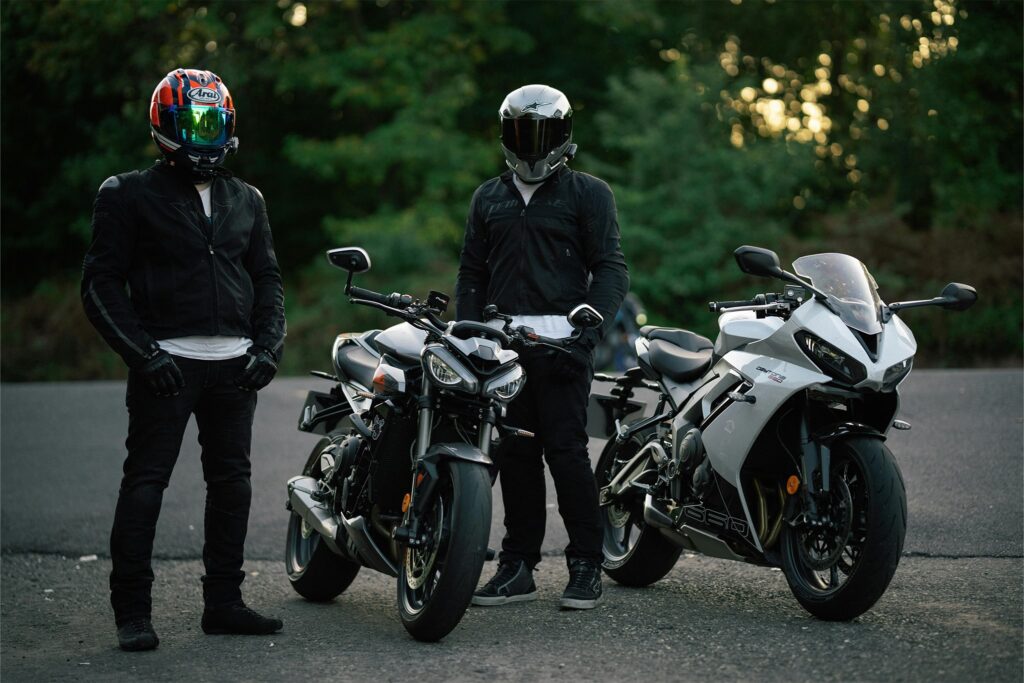
Riding a motorcycle requires learning new skills, but sometimes the lingo feels like a whole different language. Understanding the basics makes everything easier, whether you’re picking out your first bike, practicing skills, or just trying to keep up with what other riders are talking about.
This guide breaks down common motorcycle terms, slang, and lingo so you can follow the conversation and feel right at home in the riding community.
General Riding Terms
Apex: The innermost point of a curve in a corner. “Hitting the apex” is a common phrase that means taking the smoothest, safest line through a turn.
ATGATT (All the Gear, All the Time): Both an acronym and a safety mindset that means wearing full protective gear on every ride. No exceptions.
Lane Positioning: Choosing the best position in a lane for visibility, safety, and avoiding road hazards.
Lane Splitting: Riding between lanes of slow or stopped traffic. Lane splitting is permitted in some states, but prohibited in others. Riders everywhere tend to have strong opinions on it.
Target Fixation: The tendency to steer toward what you’re looking at. Look at the pothole and you’ll hit it. Look past it and you’ll ride around it.
T-CLOCS (Tires, Control, Lights, Oil, Chassis, Stands): A pre-ride inspection checklist that helps riders spot issues before they hit the road. Think of it as a habit that only takes a few minutes but can prevent breakdowns, accidents, or long walks home.
Popular Slang Terms
Garage Rot: The slow death of a motorcycle that sits unused for too long. Fluids break down, parts seize up, and rust starts to creep in. If you’re not riding often, proper storage is key, but the best prevention is to keep the wheels turning.
Leathers: A common term for protective riding gear, applicable to jackets, pants, and even full one-piece racing suits traditionally made of leather. These days, many riders also wear textile gear made with advanced fabrics that offer equal or better protection, but “leathers” remains the catch-all term most use to refer to riding gear of any kind.
Ride Out: A planned group ride where motorcyclists gather to hit the road together, often along a scenic route or to a specific destination. Ride outs can be casual weekend meetups or big community events with dozens (or even hundreds) of bikes. They’re part social, part tradition, and one of the best ways for new riders to connect with the community.
Squid: Slang for a reckless rider who rides beyond their abilities, often putting others at risk and not equipped with proper gear. Nobody wants to be a squid, and nobody wants to ride next to one either.
Two-Up: A term for carrying a passenger on your motorcycle. Riding two-up changes the bike’s balance, braking, and handling, so it takes some adjustment for the rider. The passenger, also known as a pillion, should also know the basics, such as leaning with the rider and keeping still at stops.
Twisties: Slang for a stretch of curvy road with lots of turns. Many riders love twisties because they’re the ultimate test of cornering skills and bike control. They’re also some of the most rewarding roads to ride, especially once you’ve built confidence and proper technique.
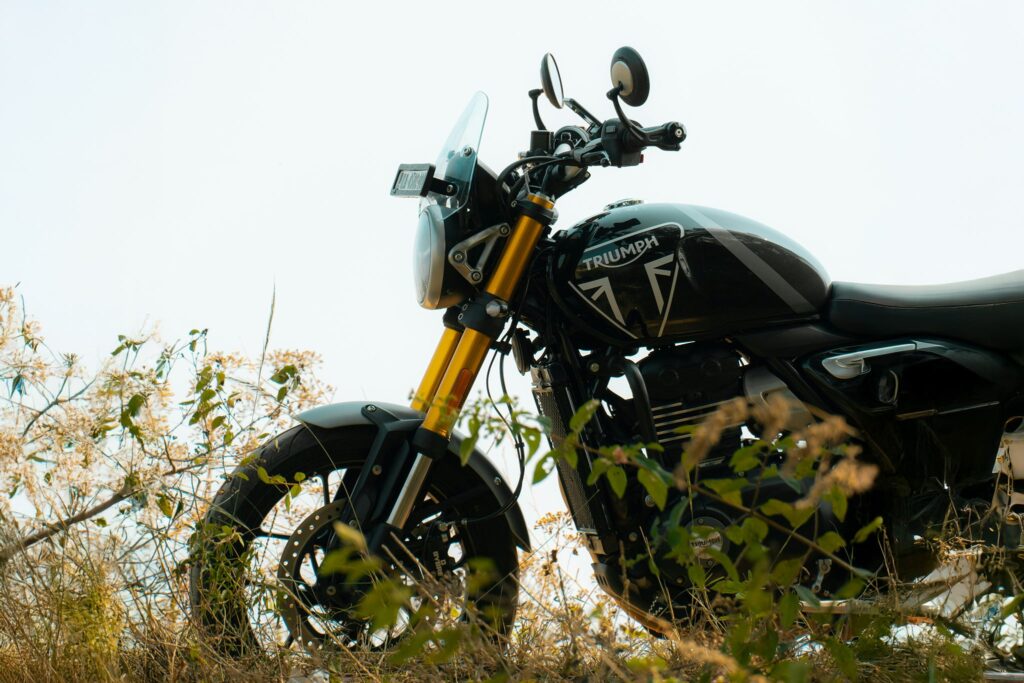
Engine and Powertrain Terms
Displacement (cc): The total volume of an engine’s cylinders, usually measured in cubic centimeters (cc). In general, more displacement means more power, but engine design, weight, and tuning also play a big role in performance.
Powertrain: The full system that generates and transmits power to the rear wheel, including the engine, transmission, and drivetrain.
Drivetrain: The system of components that transfers power from the engine to the rear wheel, making the bike move. Depending on the motorcycle, this can be a chain, belt, or shaft drive, and each comes with its own impact on performance, handling, and maintenance requirements.
RPM (Revolutions Per Minute): A measure of engine speed, shown by how many times the crankshaft (the part that converts engine movement to rotational motion) completes a full rotation in one minute. Many motorcycles have a tachometer that displays the RPMs, including the redline, or the maximum safe engine speed. Higher RPM typically means more power output but also increases fuel consumption and engine wear.
Torque: The working force of the engine that moves the motorcycle forward. Torque is what you feel when you roll on the throttle and the bike surges ahead. It’s especially important for acceleration and low-speed control.
Horsepower: A measure of how quickly the engine can produce that working force. Horsepower influences your bike’s top speed and high-RPM performance, making it a key factor in how fast a motorcycle can ultimately go.
Braking and Handling Terms
ABS (Anti-Lock Braking System): A safety feature that prevents the wheels from locking during hard braking, helping you stay in control and avoid skidding. Standard on many modern bikes, and on some models you can adjust the settings or switch it off for specific conditions, such as off-road riding.
Countersteering: The main steering technique used at speed. To turn right, you press forward on the right handlebar. To turn left, you press forward on the left handlebar. It feels counterintuitive at first because the front wheel briefly points the opposite way, but it’s what makes the bike lean and turn smoothly.
Direct Steering: The opposite of countersteering. At very slow speeds, steering works the way you’d expect. Turn the bars left and the bike goes left, turn them right and it goes right. Once you pick up speed, though, countersteering takes over.
Engine Braking: Slowing down by rolling off the throttle and letting the engine’s resistance reduce speed without using the brakes.
Throttle Control: Good throttle control is the ability to smoothly roll on or ease off the throttle to keep the bike stable. It’s especially important when cornering or transitioning in and out of turns, where steady input maintains traction and balance.
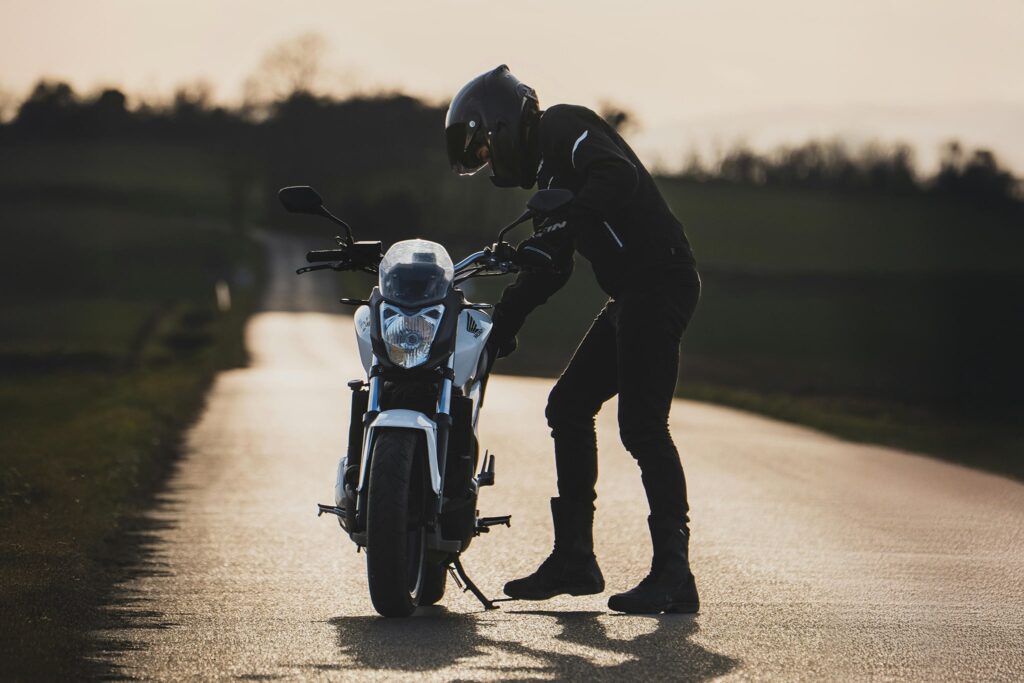
Chassis and Suspension Terms
Engine Guards: Protective bars (usually steel or alloy) mounted to the frame to shield the engine, bodywork, and other key components in the event of a tip-over. Often paired with sliders for extra protection.
Frame: The main structure of the motorcycle that holds everything together, including the engine, suspension, and wheels. Frames can be made of steel, aluminum, or even carbon fiber on high-end bikes. Some designs use the engine as part of the frame itself. A smaller subframe typically supports the seat and rear components.
Front Fork: The main component of a motorcycle’s front suspension, usually made of two telescopic tubes that connect the front wheel to the frame. The fork compresses to absorb bumps and impacts, keeping the ride smoother and the front wheel in contact with the road.
Sliders: Small protective pieces (often plastic or metal) mounted to the frame, forks, or swingarm. They’re designed to reduce damage if the bike tips over or goes down at low speed.
Swingarm: The pivoting arm that connects the rear wheel to the frame. It works with the rear shock to absorb bumps and keep the bike stable.
Drivetrain & Transmission Terms
Chain Drive: The most common way power is delivered from the engine to the rear wheel. Strong and efficient but requires regular lubrication and tension adjustments.
Belt Drive: Uses a toothed rubber belt reinforced with advanced fibers to spin the rear wheel. It’s quieter and requires less maintenance than a chain but less common.
Shaft Drive: A sealed metal drive draft and gears, usually inside a lubricated casing, deliver the thrust. Most often found on touring and cruiser bikes. Virtually maintenance-free but adds extra weight.
Clutch Lever: The handlebar lever that connects or disconnects engine power to the transmission. Crucial for shifting gears.
Feathering the Clutch: Partially engaging or disengaging the clutch as needed while rolling on the throttle. Often used at low speeds, during slow maneuvers, or when starting from a stop. Mastering clutch feathering is key for balance and preventing stalling.
Friction Zone: The point in the clutch lever’s movement where the engine begins transferring power to the rear wheel. It’s the sweet spot that makes smooth starts and low-speed control possible.
Gear Shift Lever (Shifter): A foot-operated lever, typically located on the left side, used to shift gears in a set pattern.
Gear Shift Pattern: The standard motorcycle shifting sequence for shifting gears (e.g., 1 down, 4-5 up). Essential for new riders to understand.
Sprockets: Toothed wheels that drive the chain to transfer power from the engine to the rear wheel.
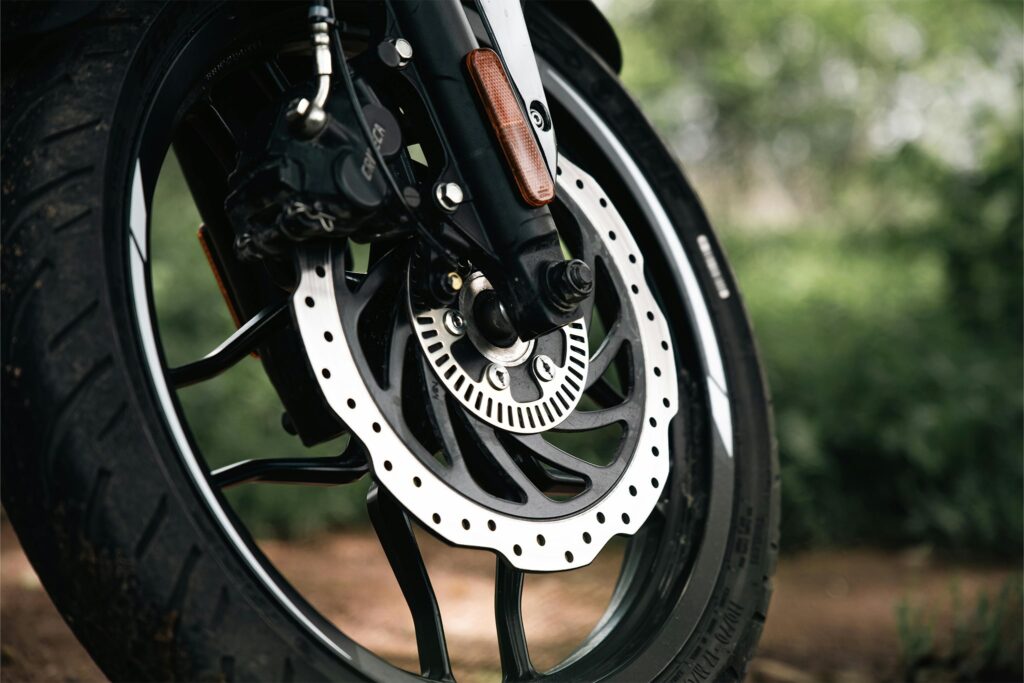
Talking the Talk
Learning the lingo makes riding easier (and a lot more fun) when you’re just starting out. It helps you keep up with conversations at gas stops, understand tips from experienced riders, and even explain what’s going on with your bike when something feels off.
You don’t need to memorize every term right away. The vocabulary will sink in naturally as you ride, learn, and spend time with the community. Before you know it, you’ll be speaking the language like it’s second nature.
